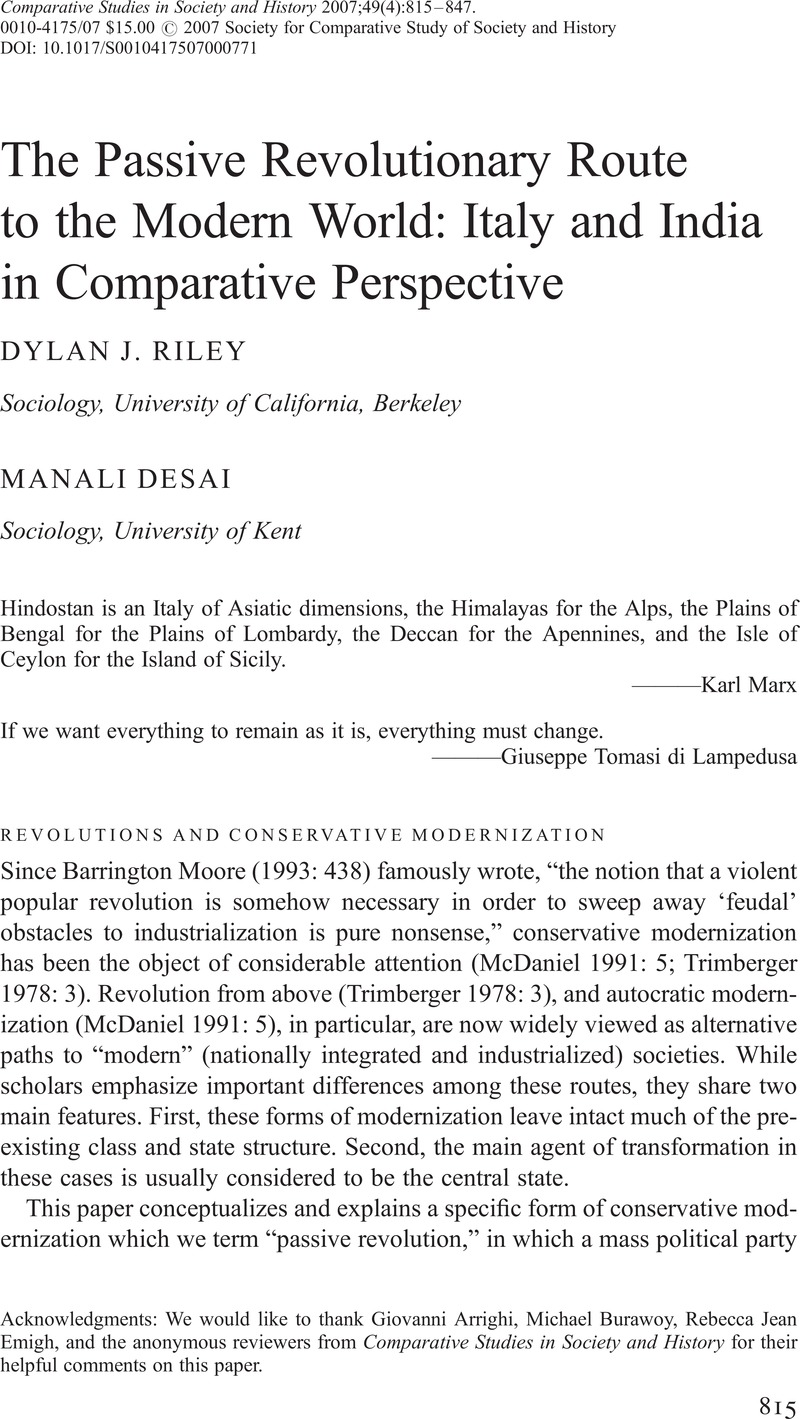Crossref Citations
This article has been cited by the following publications. This list is generated based on data provided by Crossref.
McKay, Ian G.
2010.
The Canadian passive revolution, 1840-1950.
Capital & Class,
Vol. 34,
Issue. 3,
p.
361.
Morton, Adam David
2010.
The continuum of passive revolution.
Capital & Class,
Vol. 34,
Issue. 3,
p.
315.
Morton, Adam David
2010.
Reflections on Uneven Development.
Latin American Perspectives,
Vol. 37,
Issue. 1,
p.
7.
Morton, Adam David
2013.
The Limits of Sociological Marxism?.
Historical Materialism,
Vol. 21,
Issue. 1,
p.
129.
Mudge, Stephanie L.
and
Chen, Anthony S.
2014.
Political Parties and the Sociological Imagination: Past, Present, and Future Directions.
Annual Review of Sociology,
Vol. 40,
Issue. 1,
p.
305.
Brading, Ryan
2014.
From Passive to Radical Revolution in Venezuela’s Populist Project.
Latin American Perspectives,
Vol. 41,
Issue. 6,
p.
48.
Nilsen, Alf Gunvald
and
Nielsen, Kenneth Bo
2016.
Social Movements and the State in India.
p.
1.
Stuart Brundage, Jonah
2017.
The Pacification of Elite Lifestyles: State Formation, Elite Reproduction, and the Practice of Hunting in Early Modern England.
Comparative Studies in Society and History,
Vol. 59,
Issue. 4,
p.
786.
Ekers, Michael
Kipfer, Stefan
and
Loftus, Alex
2020.
On Articulation, Translation, and Populism: Gillian Hart’s Postcolonial Marxism.
Annals of the American Association of Geographers,
Vol. 110,
Issue. 5,
p.
1577.
Ford, Adrian
and
Newell, Peter
2021.
Regime resistance and accommodation: Toward a neo-Gramscian perspective on energy transitions.
Energy Research & Social Science,
Vol. 79,
Issue. ,
p.
102163.
Heller, Patrick
2022.
Democracy in the Global South.
Annual Review of Sociology,
Vol. 48,
Issue. 1,
p.
463.
Paret, Marcel
2022.
Resistance within South Africa’s Passive Revolution: from Racial Inclusion to Fractured Militancy.
International Journal of Politics, Culture, and Society,
Vol. 35,
Issue. 4,
p.
567.
Sotiris, Panagiotis
2022.
Revisiting the Passive Revolution.
Historical Materialism,
Vol. 30,
Issue. 3,
p.
3.
Ongur, Hakan Övünç
and
Kolasi, Klevis
2023.
The Still Enlightened “Late-Comers”: A Comparison between the Proto-Modernist Nationalisms of Guiseppe Mazzini and Ziya Gökalp.
Nationalities Papers,
Vol. 51,
Issue. 3,
p.
684.
Heller, Patrick
2023.
Parties, Civil Society and Democratic Deepening: Comparing India, Brazil and South Africa.
Studies in Indian Politics,
Vol. 11,
Issue. 1,
p.
10.
Ozgen, Zeynep
2023.
From secularization to religious resurgence: an endogenous account.
Theory and Society,
Vol. 52,
Issue. 4,
p.
543.
Kolasi, Klevis
2024.
Reconciling Tensions in the Analysis of Bourgeois Revolutions: A Critical Realist Approach.
Uluslararası İlişkiler Dergisi,
Vol. 21,
Issue. 82,
p.
79.
Levenson, Zachary
and
Paret, Marcel
2025.
Absorbed in Struggle: South Africa’s Passive Revolution From Below.
Critical Sociology,



